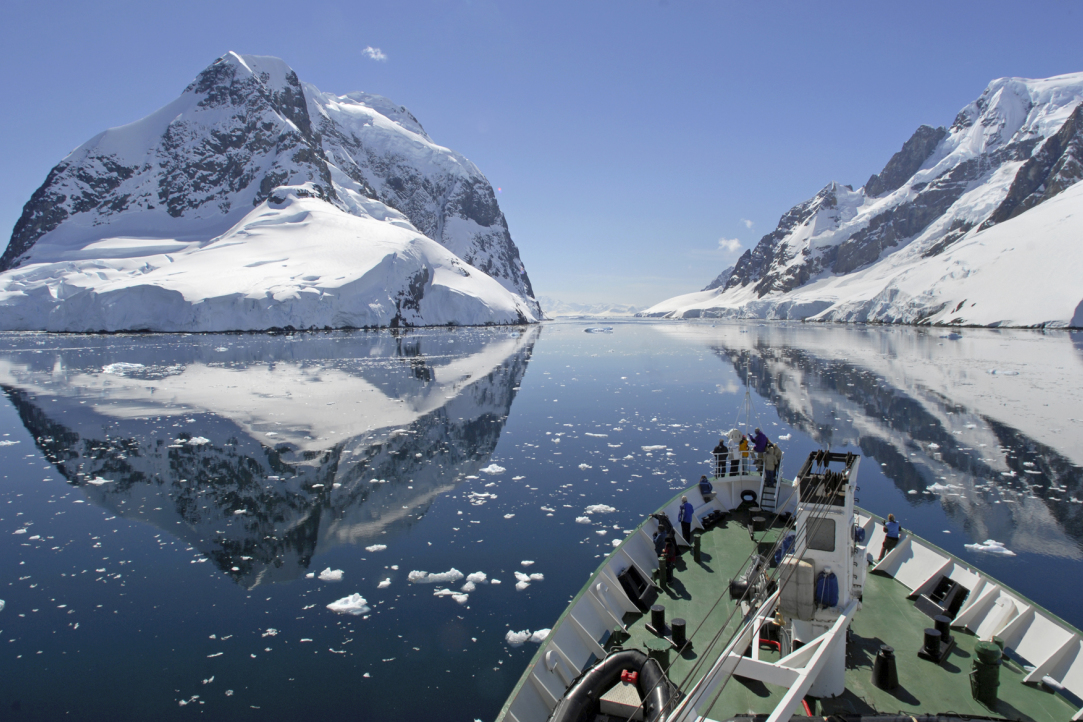Sensors Developed at HSE University to Be Put to Work in Antarctica

Multi-sensors developed at HSE MIEM (HSE Tikhonov Moscow Institute of Electronics and Mathematics) have become part of the NB-IoT network deployed by Russian network provider MTS at the Russian Antarctic station ‘Progress’. The main task of the system is to monitor runway conditions.
According to Vasily Burov, HSE MIEM advisor, a group was created to work on the Antarctic project. Its status was not formalised, but it was essentially a project group. The group included lecturers Ilya Ivanov and Alexander Semion, fourth-year students Nelly Sannikova and Lada Churkina, and students of the Internet of Things and Cyber-Physical Systems Master’s Programme Mikhail Denisov and Alexander Ilyin. Vasily Burov himself became the academic supervisor of this group.
‘This is not the first time I have had the chance to work with students—we collaborate on many projects,’ says Alexander Semion, manager of the project office and developer of the case and electronics of the test device. ‘It is not easy, but it is interesting, especially when you are dealing with students who are able to do a project on their own. In the case of working on multi-sensors for communication in Antarctica, it was a successful collaboration with one such student, Alexander Ilyin.’
There was very little time, so he had to make the device himself. ‘I assembled it on my own,’ says Alexander Semion. Alexander Ilyin had an integral role in the project: he wrote and debugged the firmware. The device works well for a prototype, although there were difficulties. For example, there were problems with setting up communication parameters in Antarctica.
Now we are making a new device, and the work of this project will mostly be carried out by students
In a short time, a test device was made and shipped to Antarctica. Work with the test device allowed the group to clarify the requirements and characteristics needed for designing a new version of sensors for small-scale production, which will function in an industrial setting. According to Vasily Burov, the developers plan to complete work on these devices by the end of the academic year.
Vasily Burov, Advisor, HSE MIEM

When we learned about our MTS partners’ project and the needs of the polar explorers, we decided that it would be a good exercise for us to develop a student project around it. Plus, it is simply an interesting task in itself. This project fits perfectly into the logic of MIEM's orientation towards various aspects of cyber-physical systems development and allows us to put our expert skills to work in the field of the Internet of Things in an unusual sphere.
The first in a series of developments for Antarctica were multi-sensors created at HSE MIEM that allow regular monitoring of ice and snow temperature — at both surface level and a depth of up to 1 metre with an interval of 10 centimetres. They facilitate the estimation of surface shifts using GNSS-positioning. As a result, the ability to regulate the thawing in the lower layers of the ice slab and the effect of water lenses are strengthened. Thus, it is possible to reduce the risks of dangerous snow failures.
‘This work gives students unique experience—from identifying the purpose and conditions of the devices, using a modern communication standard that is not yet widespread in our country, to the fact that transport communication with Antarctica is rarer than space travel,’ says Vasily Burov, stressing that MIEM plans to capitalise on the experience gained in projects for the market.
It is also planned to further develop work with polar explorers to create unique equipment both for the operation of polar stations and for scientific purposes. For example, one of the scientific tasks is related to the use of trackers, which can be lost, so specific eco-friendly batteries should be used in them.
The next result will be the creation of their own platform for building autonomous Internet of Things systems, based on the NB-IoT communications standard and designed for operation in adverse conditions.
Trackers, multi-sensors and controllers running on the network will facilitate the study of the glacier movement and snow cover, monitor snow runway conditions and the microclimate in living and working areas, MTS said. The NB-IoT network on the 900 MHz band is available in the territory of ‘Progress’ station and within a radius of up to 35 kilometres, depending on the terrain. Data from the devices are sent to a server installed at the Arctic and Antarctic Research Institute (AARI) in St. Petersburg. MTS has developed a specialised platform for polar explorers, which visualises the information received from sensors in the form of convenient tables and graphs. Visualisation is carried out on an additional server based on the Orange-Pi microcomputer located at the station, making it possible to reduce the volume of data traffic transmitted to the mainland.

